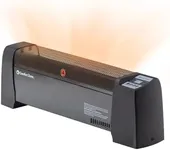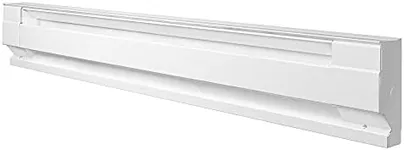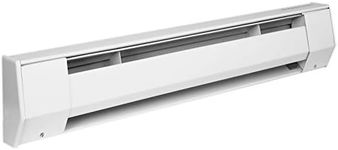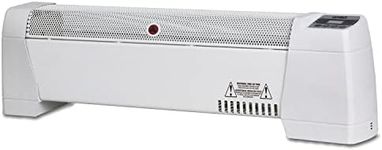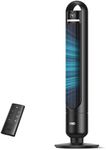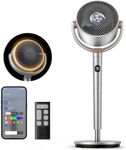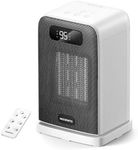Buying Guide for the Best Baseboard Heaters
Choosing the right baseboard heater is all about matching your room’s needs with the heater’s capabilities. Baseboard heaters are a popular choice for supplemental or whole-room heating because they’re quiet, easy to install, and provide steady warmth. To find the best fit, you’ll want to consider the size of your space, how much control you want over the temperature, and any safety or installation requirements you might have. Understanding the key specifications will help you make a confident and informed decision.Wattage (Power Output)Wattage tells you how much heat the baseboard heater can produce. It’s important because it determines how effectively the heater can warm up your space. Lower wattage heaters (around 500-750 watts) are suitable for small rooms or as a supplement to other heating. Medium wattage (1000-1500 watts) works well for average-sized bedrooms or offices, while higher wattage (2000 watts or more) is best for large rooms or open areas. To pick the right wattage, consider the size of your room—generally, you’ll need about 10 watts per square foot. If your room is poorly insulated or has high ceilings, you might want to go a bit higher.
Type (Electric vs. Hydronic)Baseboard heaters come in two main types: electric and hydronic. Electric heaters use a metal heating element and warm up quickly, making them good for spaces where you want fast heat. Hydronic heaters use heated liquid inside the unit, which takes longer to warm up but retains heat longer and provides more even warmth. If you want quick, on-demand heat, electric is a good choice. If you prefer a more consistent, gentle heat and don’t mind waiting a bit for it to warm up, hydronic might be better.
Length of HeaterThe length of the baseboard heater affects both its heat output and how it fits in your room. Longer heaters can spread heat more evenly and are often needed for larger spaces, while shorter heaters are easier to fit in small rooms or tight spaces. When choosing, measure the wall space where you plan to install the heater and make sure the length fits comfortably without blocking furniture or outlets.
Thermostat ControlThermostat control lets you set and maintain your desired room temperature. Some baseboard heaters have built-in thermostats, while others require a separate wall-mounted thermostat. Built-in thermostats are convenient for individual room control, but wall thermostats can be more accurate and easier to adjust. If you want precise temperature control or plan to use multiple heaters in different rooms, consider models that work with wall thermostats.
Safety FeaturesSafety features are important for peace of mind, especially if you have children or pets. Look for heaters with overheat protection, which automatically shuts off the unit if it gets too hot, and tip-over switches, which are more common in portable models. Cool-to-the-touch surfaces and childproof covers are also helpful. If safety is a top concern, prioritize models with multiple built-in protections.
Installation RequirementsInstallation requirements refer to how the heater is set up in your home. Some baseboard heaters are plug-in and can be installed by anyone, while others need to be hardwired into your home’s electrical system, which may require a professional. Consider your comfort level with installation and whether you want a permanent or temporary solution. If you’re not comfortable with electrical work, look for models that are easy to install or plan to hire a professional.
Noise LevelNoise level is how much sound the heater makes while operating. Most baseboard heaters are very quiet, but some may make clicking or popping sounds as they heat up and cool down. If you’re sensitive to noise or plan to use the heater in a bedroom or study, look for models that are specifically described as silent or ultra-quiet.


